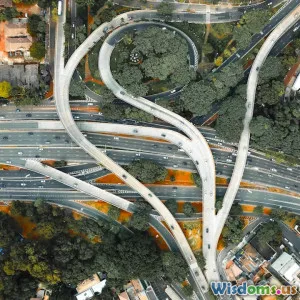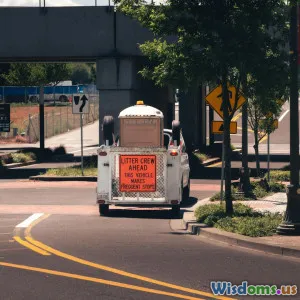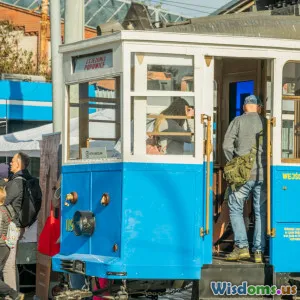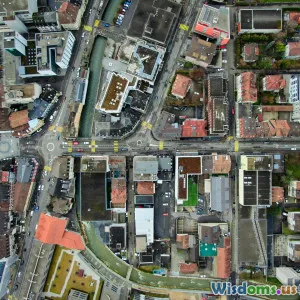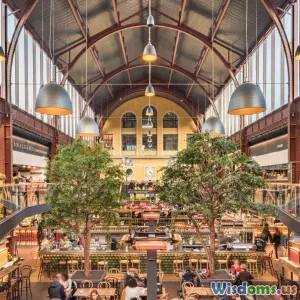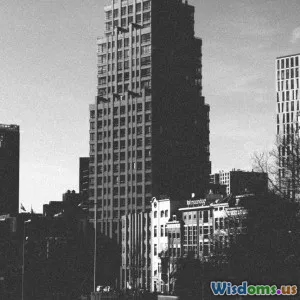
Urban Resilience through Technology
7 min read Explore how technology transforms urban resilience, making cities smarter, safer, and sustainable. (0 Reviews)
Urban Resilience through Technology: Building Smarter, Safer Cities
Cities are dynamic hubs of human activity, but they face unprecedented challenges—from climate change and natural disasters to rapid urbanization and social inequality. How can urban environments withstand and adapt to these stresses? The answer lies at the intersection of architecture, urban design, and cutting-edge technology. This article delves into how tech-driven solutions are fostering urban resilience, transforming cities into smarter, safer, and more sustainable spaces.
Understanding Urban Resilience
Urban resilience refers to a city's capacity to absorb, recover, and adapt to shocks and stresses while maintaining essential functions. These disruptions may include floods, earthquakes, hurricanes, pandemics, or economic downturns. Resilience is not just about bouncing back but evolving to better handle future challenges. Technology acts as a critical enabler in this evolution.
In the context of architecture and urban design, resilience entails designing buildings, infrastructure, and public spaces that withstand hazards and promote social equity, efficient resource use, and connectivity.
Smart Infrastructure: The Backbone of Resilient Cities
Smart infrastructure integrates sensors, data analytics, and automation to enhance the efficiency, safety, and sustainability of urban systems.
Examples:
-
Singapore’s Smart Nation Initiative boasts over 1.3 million sensors across the city-state, monitoring everything from traffic flow to air pollution. Real-time data guides city planners and emergency responders, optimizing resource allocation during heatwaves and floods.
-
Barcelona’s Smart Urban Platform leverages IoT devices to enhance water management. Smart irrigation systems reduce water wastage by 25% in parks, crucial for drought-prone Mediterranean climates.
Developing resilient infrastructure means incorporating redundancy as well as adaptivity. For instance, modular construction using climate-adaptive materials helps buildings endure extreme temperatures or flooding.
Artificial Intelligence and Predictive Analytics in Urban Management
AI enables proactive rather than reactive responses to urban risks by analyzing vast data streams to predict potential failures or hazards.
Case in Point:
-
In New York City, the Department of Transportation uses AI-based predictive models to forecast flooding during storms, enabling pre-emptive street closures and drainage management.
-
Climate AI startup Jungle partners with cities globally to apply machine learning models on social vulnerability and environmental data, helping prioritize investments in underserved neighborhoods.
Such technologies also support urban planners by simulating scenario-based impacts of infrastructure decisions, aligning new developments with resilience goals.
Sustainable Energy & Resource Management Through Technology
Energy resilience is crucial as cities strive to reduce carbon footprints and dependence on centralized grids.
-
Copenhagen has invested heavily in smart grids and district heating systems, which dynamically reroute energy to where it’s needed most. During storms or blackouts, microgrids operate autonomously, ensuring critical facilities like hospitals and transit hubs remain functional.
-
Innovations like energy-harvesting pavements convert pedestrian steps into power, showcasing how everyday urban components contribute to sustainability.
Water recycling technologies and sensor-enabled waste management systems also exemplify tech-driven resource resilience.
Adaptive Urban Design Enhanced by Virtual and Augmented Reality
Virtual Reality (VR) and Augmented Reality (AR) tools empower architects, urban designers, and communities to visualize and optimize urban layouts before construction.
-
The New York City Housing Authority (NYCHA) partnered with tech firms to deploy AR visualization, allowing residents to co-design renovation plans that enhance ventilation and flood-proofing.
-
VR simulations help emergency planners prepare evacuation routes and test infrastructure vulnerability under different disaster scenarios.
This collaborative, anticipatory approach ensures that communities are better prepared and engaged.
Social Resilience: Technology as a Connector and Equalizer
Technology strengthens social fabric, a core pillar of urban resilience.
-
Community apps like Nextdoor and Neighborland facilitate hyperlocal communication, enabling neighbors to coordinate during crises.
-
Online platforms promote inclusivity in urban planning decisions. Digital twins—virtual replicas of urban areas—allow marginalized groups to participate virtually, overcoming barriers of access.
-
Telemedicine, bolstered during the COVID-19 pandemic, expanded healthcare reach in underserved urban areas, illustrating how tech can mitigate social vulnerabilities.
Challenges and Considerations
Deploying technology in urban resilience faces hurdles:
-
Data Privacy and Security: Cities must balance data utilization with protecting citizen privacy.
-
Digital Divide: Equitable access to technology is vital to ensure benefits reach all residents, especially vulnerable populations.
-
Integration Legacy Systems: Retrofitting aging infrastructure with new technologies requires thoughtful planning and investment.
To navigate these challenges, cross-sector collaboration between governments, private firms, academia, and communities is essential.
Conclusion: Charting the Future of Resilient Urban Living
The fusion of technology with architecture and urban design offers powerful tools to transform cities into resilient, adaptive ecosystems. Smart infrastructure, AI-driven management, sustainable resource technology, immersive design tools, and socially integrative platforms collectively enable urban environments to meet the multifaceted challenges ahead.
As cities continue to grow and face emerging threats, embracing technological innovation will not only protect physical assets but empower communities socially and economically. It is a vibrant call to architects, planners, policymakers, and citizens alike: leverage technology wisely to build urban futures that are safe, inclusive, and sustainable.
By integrating cutting-edge technology with human-centric design, we can ensure cities don’t just survive but thrive in the face of uncertainty.
Rate the Post
User Reviews
Popular Posts











